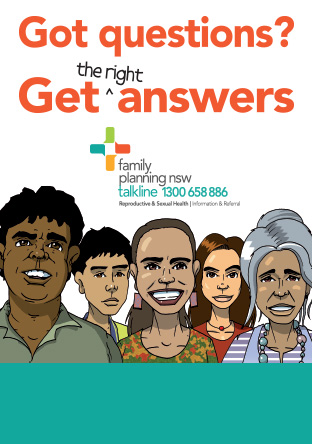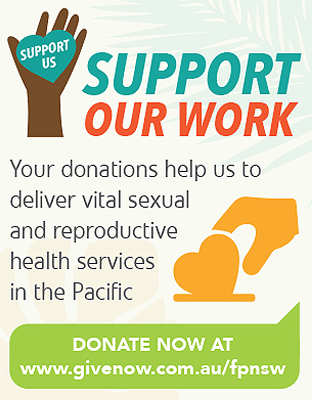Chlamydia
What is chlamydia?
Chlamydia is a common sexually transmitted infection (STI) caused by a bacteria. It affects both men and women. Most people with chlamydia do not have symptoms. This means you can pass the infection to a partner without knowing it. Having a regular sexual health check-up can help you find out if you have chlamydia.
In women chlamydia can cause an infection of the cervix (neck of the uterus). This type of infection usually has no symptoms. A chlamydia infection can sometimes spread into the uterus and then into the fallopian tubes. This is called pelvic inflammatory disease (PID). PID causes pain and it can be associated with irregular bleeding from the vagina. PID can lead to damage to the tubes which can make it difficult to become pregnant. Pregnant women with chlamydia infection can pass the bacteria to their baby during birth. This can cause the baby to develop eye infections or lung infections.
In men it infects the urethra (the tube that urine and semen travels down). Chlamydia can sometimes cause an infection of the testicles, and can be a possible cause of infertility.
Chlamydia can also infect the anus, the throat and the eyes.
How do you get chlamydia?
Chlamydia is spread by having unprotected sex with someone who is infected. This means sex without a condom.
This can include vaginal, anal or oral sex. Because the infection often has no symptoms, you won't be able to tell if your partner has it. You cannot get chlamydia from toilets, swimming pools, spas or normal contact with people.
How can I protect myself from chlamydia?
The best way to prevent getting chlamydia and other STIs is to have safe sex.
- use a condom every time you have vaginal, oral or anal sex
- don't have sex with someone who knows they have chlamydia, even with a condom, until after they have completed their treatment
- have regular testing if you are at risk of STIs
What are the symptoms of chlamydia infection?
Most people have no symptoms at all. If you do get symptoms, you will usually get them about 7-14 days after having unprotected sex.
For women - you may have:
- abnormal bleeding from the vagina including bleeding or spotting after sex
- an abnormal discharge from the vagina
- stinging or burning when passing urine or pain during sex
A pregnant woman who has chlamydia may:
- have a higher chance of having a miscarriage or premature baby
- have a baby with lung and eye infections
For men - you may have:
- a watery or milky discharge from the penis
- redness at the opening of the penis
- stinging or burning when passing urine
- pain and swelling in one or both testicles
How do I get tested for chlamydia?
Testing for chlamydia is easy. Testing is usually done on a urine sample or on a swab collected either by yourself (self collected) or your doctor or nurse.
Urine test
You will be asked to urinate (pee) into a jar. It is best if you have not passed urine for 20 minutes before the sample is collected.
Swab test
- men who have a discharge can have a swab taken from the opening of the penis
- men who have sex with men can have an anal and throat swab taken if there has been unprotected anal or oral sex
- women who don't have symptoms can have either a self-collected swab taken from the vagina or a urine test. A self-collected vaginal swab is a bit more accurate than a urine test. Some women may be advised to have an anal swab taken
- women can have swabs collected during an examination by their doctor or nurse:
- if there are symptoms such as pain, discharge or abnormal bleeding
- at the same time as a cervical screening test (CST)
How is chlamydia treated?
Chlamydia can be easily treated with antibiotics. Your doctor will advise you which antibiotic is most effective to take but usually only a single dose is needed. Your doctor may prescribe antibiotics before your test results are available.
Women with PID or men with testicular infection need a longer course of antibiotics.
You will be advised to have no sex at all, not even with a condom, until 7 days after you have started your antibiotics.
Your partner needs to be treated too. You should have another test for chlamydia 3 months after treatment to make sure you have not got the infection again.
What is contact tracing?
Your doctor will explain who needs to be contacted if you have a chlamydia infection and can also help you with contact tracing. It is important to let your recent sexual partners know if you have chlamydia so that they can also get tested and treated. Contact tracing can be done confidentially. There are websites that let you send a free anonymous text message or email – just ask your doctor or nurse about it.
For more information
Family Planning NSW Talkline – www.fpnsw.org.au/talkline or 1300 658 886
National Relay Service (for deaf people) – 13 36 77
TIS National's interpreting service – 131 450
Visit your nearest Family Planning NSW clinic – www.fpnsw.org.au/clinics
NSW Sexual Health Infolink – www.shil.nsw.gov.au or 1800 451 624
Let Them Know – letthemknow.org.au


